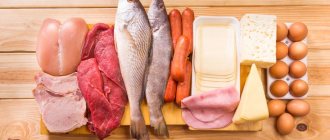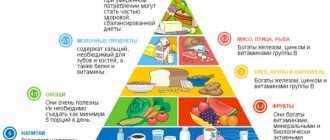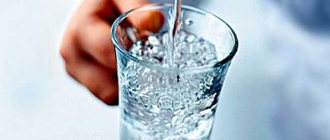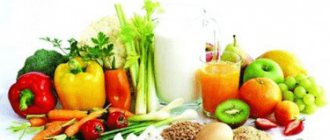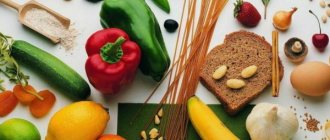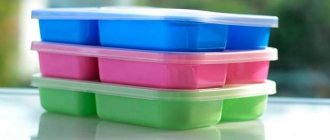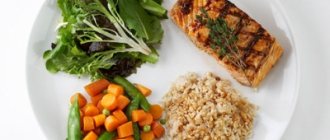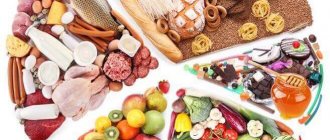02/01/2018 Healthy nutrition
During adolescence, active growth of the body and development of all organs begins. This sudden burst of growth and other changes is associated with hormonal, cognitive and emotional changes. During this period, the body needs good nutrition and a healthy lifestyle more than ever.
Due to constant growth, the body begins to require more energy - calories that are necessary for life support. During this period, the eating habits of children and adolescents change dramatically, and with them their lifestyle. It is worthwhile to correctly create a proper nutrition menu for a teenager.
About adolescence
It is customary to divide adolescence into three stages:
- Early adolescence (11-12 years): Puberty begins and cognitive development increases.
- Middle adolescence (13-15 years): characterized by an increased desire for independence and experimentation in relationships with others.
- Late adolescence - youth (16 - 21 years old): the time for making important decisions in matters of finding one’s place in society and acquiring a profession.
At any time between these stages, it is extremely important to eat a balanced diet. Since poor nutrition can lead to problems with the harmonious development of all organs and unpleasant aspects in cognitive development. Lack of nutrients is the cause of decreased concentration and attention. This provokes disruption of academic performance and failure in studies. But the worst thing is that in addition to lethargy and lack of concentration, the child can develop health problems.
Ryazhenka soufflé recipe
Ingredients:
- gelatin 1 tbsp. l.
- water 50 ml
- Ryazhenka – 500 ml
How to cook:
- Pour gelatin with water and leave for half an hour. Then dissolve it in a water bath.
- Take fermented baked milk and beat it with a mixer for 3 minutes.
- Add gelatin to fermented baked milk and beat for another 3 minutes. You can add natural sweetener or berries to taste. But it’s very tasty even without additives.
- Pour into vases or bowls and refrigerate for a couple of hours or overnight.
- When serving, garnish with fresh berries, a mint leaf or sprinkle with cinnamon.
What are the consequences of poor nutrition among teenagers?
Due to chaotic eating with incorrect and harmful foods, the risk of chronic diseases increases: diabetes, cardiovascular problems. These diseases can lead to the onset of obesity. If your teen's diet doesn't have enough iron, he or she may be at increased risk for iron deficiency anemia. Most often, average teenagers consume sweet, carbonated drinks, fast food, chips, pizza, and other unhealthy foods. But the consumption of vegetables and fruits, whole grains may be neglected. And such a diet for a teenager simply does not allow the body to receive useful components, which leads to the following problems:
- frequent fatigue;
- dizziness;
- decline of the immune system;
- dental problems;
- joint pain;
- fragility of bones, high risk of fractures;
- slow growth;
- menstrual irregularities.
It is important to know what proper nutrition should be for teenagers. After all, no parent wants to see their child unhealthy.
Cooking food for school
Nutrition for schoolchildren during school hours is no less important than at home. What can you prepare for your child if the establishment does not have a canteen or you do not trust the local catering?
First, ask your child what he would like to see in his lunch box for lunch. Perhaps it will be breakfast cereals made from dried fruits and nuts, or perhaps he will want a casserole. There is no need to put a teenager’s least favorite dish in a box, because there is a high probability that he will not want to eat it.
Based on the opinion of nutritionists, the correct lunch (or afternoon snack) for a schoolchild may consist of:
- pieces of fresh fruit, nuts, dried fruits - this is a dry bulk breakfast;
- yogurt, curds, cheese mass;
- healthy sandwiches based on cereal bread, butter, fresh vegetables, and sliced meats;
- nutritious rolls made from pita bread, fresh herbs and meat;
- eggs, slices of cheese, vegetables;
- cottage cheese or berry casseroles;
- Japanese snack.
The latter nutrition option is optimal for a growing body, since a bento lunch or dry snack contains various dishes that are rich in protein, vitamins and minerals. As you can see, preparing lunches for school does not take much time. You just need to find your recipe and follow your child’s wishes.
It is very important to package food for your schoolchild beautifully so that he wants to eat it. Lunch boxes will help you with this. The color palette of the products is very bright, and the child can decorate it himself with stickers or drawings.
Important microelements needed by the teenage body
The body needs to receive a full range of vitamins.
Calcium
One of the important components is calcium. It helps strengthen bones, teeth and hair. By getting enough calcium from an early age, you can protect yourself from bone problems in the future, as the body will accumulate calcium and strengthen itself with it. Calcium affects muscle contraction and relaxation, participates in the process of blood clotting, plays the role of anti-stress and performs many other useful functions. Milk, dairy products, hard cheeses, cabbage, beans, various nuts, seeds, rice, lentils, broccoli contain calcium.

Squirrels
It is also important to control the amount of protein. This component is known to everyone for its importance for muscle growth and strengthening. Sufficient amounts of protein are needed not only by athletes who are building muscle mass, but also by teenagers to provide enough energy to build muscles and tissues of internal organs. Proper nutrition for a 15-year-old teenager must contain high-protein foods that will help him get stronger and maintain a high level of energy. A diet rich in protein helps you lose excess fat while strengthening your muscles.

You can get protein from lean meat, poultry, fish, beans, nuts, eggs, and tofu. This can also include seafood (lobsters, squid, mussels, shrimp, crabs); milk with any percentage of fat content, half-fat cottage cheese, kefir, yoghurts.
Fats
Fat is an integral nutritional component that helps adolescents’ bodies grow, develop harmoniously and actively. It is responsible for the health of hair, skin, nails and gives energy. A teenager should consume 25 to 35% fat of total calories each day.
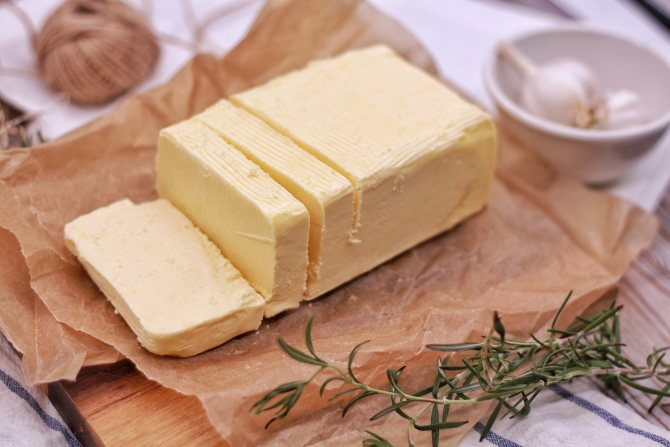
Unsaturated fats will always be useful as long as their amount in the body does not exceed the norm (after all, they carry too many calories). The best sources of fat for the body:
- olive, rapeseed, sunflower, corn and soybean oil;
- fish such as salmon, trout, tuna, whitefish;
- nuts: walnuts, almonds, peanuts, cashews or others.
Saturated fats, unlike unsaturated fats, do dirty work in the body and are of little use. They can have a detrimental effect on arteries, clogging them, and increase the risk of cardiovascular diseases, and we have already mentioned what this leads to. Saturated fat is found mainly in animal products and some vegetable oils:
- butter;
- whole milk;
- cheese;
- fat meat;
- coconut and palm oil.
Trans fats are the most dangerous group for the body and do not provide any benefit. They are found in:
- baked goods such as cookies, buns, muffins, donuts;
- dry snacks, such as crackers, chips;
- margarine;
- fried food.
Iron
Proper nutrition for a 16-year-old teenager must contain iron. For boys, iron is very important, because their rapid growth and increase in muscle mass require external support. And for girls, iron is important not only to maintain growth, but also to compensate for blood loss during menstruation. To get iron, eat the following foods:
- Fish and seafood;
- lean beef;
- cooked legumes: peas, beans, beans;
- buckwheat;
- white cabbage;
- potatoes boiled in their jackets;
- spinach.
Doctors' advice

According to qualified doctors, children in adolescence need proteins, minerals, and vitamins. These substances support normal growth, accelerate the formation of the musculoskeletal system, and promote brain development. To avoid metabolic disorders or obesity during sudden hormonal changes, you need to monitor the teenager’s diet.
Murashko Ekaterina, nutritionist
A teenager should eat a variety of foods made from animal or plant products. The amount of carbohydrate food should exceed 4 times the amount of proteins and fats. The best sources of proteins: turkey, fish, milk, cottage cheese, nuts, legumes, etc.
Children 14-15 years old are recommended to consume cream, sour cream, and vegetable oils. Sources of carbohydrates: sugar, whole grain bread, class A pasta, potatoes, vegetables, fruits, berries. Fast carbohydrates instantly charge you with energy, but after 2 hours the child will be hungry, and concentration and memory will decrease.
Important! It is better to exclude confectionery products containing palm and coconut oil from the diet. You can replace them with homemade baked goods, which are allowed to be consumed no more than once a week.
It is recommended to eat food 4-5 times a day with an interval of 3 hours. Lunch should be the most satisfying, and dinner should be light. In addition, do not forget about the drinking regime; the child should drink at least 1 liter of water per day.
Selezneva Ksenia, nutritionist

The nutritionist claims that proper, rational nutrition for adolescents is a necessary condition for ensuring their health, beauty and educational success.
To attract children to healthy eating, K. Selezneva advises organizing family dinners more often, organizing them together. If there are products on the table that are harmful to children, then draw the child’s attention to their composition. As a rule, food additives are present in the first rows on the label. To learn about their health effects, search for information on the Internet. Perhaps after this the child will refuse to consume them.
Protein products are more suitable for a healthy breakfast with proper nutrition, and dairy-vegetable foods are more suitable for dinner. Replenish your diet with greens and vegetables.
Instead of the usual side dish (potatoes and pasta), you can serve porridge, which contains minerals, fiber, and vitamins.
By following these rules, you will soon notice that the child has become stronger, more energetic, and is better able to assimilate educational material.
Pyzhik Alla, nutritionist
A doctor of the first category with 19 years of experience believes that children in the prepubertal period should consume proteins (animal and vegetable), since they are structural elements for every cell of the body. Eggs, dietary meat, and fish are important foods for teenagers.
The doctor advises you to opt for small fish (mackerel, herring). This is due to the fact that large fish often accumulate salts of heavy metals, and the system of cleansing the body of toxins at this age is still unstable. Small fish are rich in Omega-3 fatty acids, which have a beneficial effect on the heart and memory.
In addition, the child’s menu should be supplemented with buckwheat, oatmeal, quinoa, green peas, lentils, peas and other sources of fiber and valuable fats.
Fruits, vegetables, and berries are used as sources of vitamins.
Diet for teenagers, how to organize a proper nutrition menu for a teenager.
Teenagers have a fairly busy and active schedule; they spend half the day at school, in sections, clubs, and then sit at home with a mountain of homework, unless, of course, they go out with friends. But even with such turmoil, it is necessary to adhere to some kind of nutritional schedule. To organize your diet, a teenager needs to remember the following rules. Be sure to have breakfast!
A healthy, satisfying breakfast is the key to a successful day. Having had a good meal in the morning, the teenager will be more attentive in class and will be able to concentrate on objects. A proper nutrition menu for teenagers must contain complex carbohydrates for breakfast, as thanks to them, children remember better, their ingenuity works faster, and anxiety decreases. It is important to remember that by skipping breakfast, a teenager slows down his metabolism, and thereby may be at risk of gaining weight.
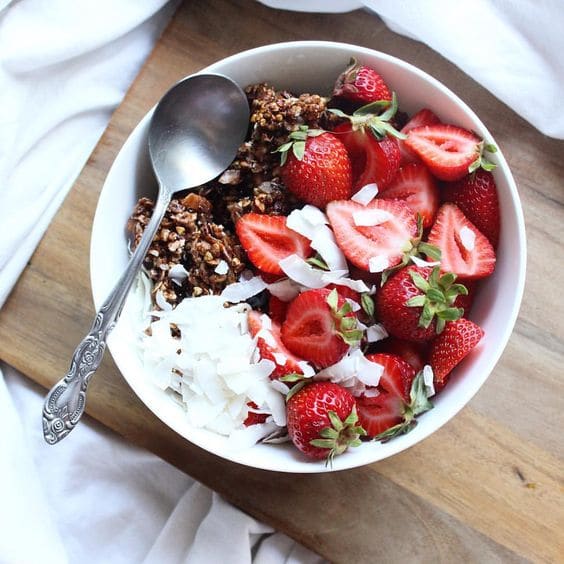
Watch your lunch.
It doesn’t matter where the teenager eats: at school or at home, but lunch must be complete and healthy. Buns and chocolates from the school buffet are not considered lunch. Unfortunately, from these the teenager receives only a lot of calories, which will not bring him any benefit.
This meal should cover one third of your food needs for the whole day. It is preferable to choose a first course for lunch or lean meat with porridge and vegetables. If a teenager does not have time to have a full lunch, then you need to take care of his healthy snack: fruits, vegetables, a sandwich with whole grain bread, chicken breast, dairy products or nuts.
Don't forget about dinner.
Even if the teenager had a full lunch, do not forget about dinner. The correct diet for teenagers involves eating healthy food at any time of the day. The option of eating chips in front of the TV does not at all fit with the healthy development of adolescents. Dinner should be a family time where the whole family gathers in the kitchen to eat together. So, without being distracted by foreign objects: a computer, TV or phone, the body will get the maximum benefit from food. After all, when young creatures are busy not with the process of absorbing food, but with watching a movie, they do not notice how much and what they eat, thereby causing overeating. A joint family dinner is a great opportunity to be with your family and share your achievements for the day.
Products that should be strictly dosed or excluded as much as possible
- White bread and sugar contribute to rapid weight gain.
- Any products with industrial food additives.
- Palm oil, margarine.
- Fruits and vegetables are out of season.
- Soda.
- Caffeine, as well as products based on it.
- Ketchup, mayonnaise, sauce bought at the store.
- Very hot or sour foods.
- Food products in fast food outlets.
- Sausages, especially raw smoked ones.
- Mushrooms, especially those of unknown origin.
- Deep-fried food.
- Packaged juices.
- Lollipops, chewing gum.
- Any discounted products that are nearing their expiration date.
What should teenagers eat to avoid gaining weight?
The issue of slimness and a beautiful body worries not only adults, but also teenagers. In particular, girls ask this question, worrying about gaining too much.
The first thing to do is to reduce your consumption of fast food to a minimum.
It's no secret that there is no place for pizza and burgers in the healthy nutrition menu for a teenager. But why? The fact is that they contain those same terrible trans fats, which can become the first step to weight gain, and simple carbohydrates, and they are also not friends for being slim. Of course, there is a huge sugar content in soda, which is always washed down with junk food. The amazing fact is that a portion of the McDonald's menu with a burger, potatoes and cola contains the daily calorie requirement for a teenager! But proper nutrition for a 15-year-old teenager includes a complete diet with healthy ingredients and microelements for the same amount of calories. Think about it!
You need to give up carbonated drinks.
Surely, many teenagers would prefer a glass of sweet lemon or other soda to tea. Not surprising, because they are so sweet and tasty that it’s hard to resist. But why did they taste like this? A lot of dyes, sugar, and inorganic components are found inside the bottle of your favorite soda. And drinking such drinks leads to skin problems, indigestion, weight gain and stomach problems.
The next step is to control portion sizes.
Conducted studies prove that a person will always eat more than he needs if the portion on the plate is large. Therefore, it is very important to remember portion control tips and use them.
- Don't eat in front of the TV. It's easy to lose count of what you've eaten if you're engrossed in watching;
- Eat slowly so that your brain has time to receive the message that your stomach is already full;
- Don't skip meals. This may cause you to eat more high-calorie food at your next meal.
Whole grain products
We can get a lot of useful energy from whole grains. Whole grain foods—such as whole grain bread, brown rice, and oatmeal—tend to have many more nutrients than processed grain foods. They give you a feeling of fullness even when consuming a small portion. Therefore, a proper diet for teenagers must contain whole grains.
Features of a rational menu for excess weight

Daily calorie intake should be reduced by 10-20%. In addition, the teenager must do physical exercise.
If you are obese, it is better to eat at home; the main part of the diet is boiled, stewed, steamed, baked (without oil) food. Replenish the menu with vegetable broth soups, water-based porridges, low-fat dairy products, dietary meat, fish, and egg whites.
You should limit the amount of potatoes, pasta (class A), and sweets. They can be included in the menu no more than 2 times in 7 days.
To lose weight faster, you need to exercise at least 2 times a week for 1-2 hours. This could be running, cycling, gymnastics, etc. For more information, see the article about recommended exercises for losing weight for a teenager.
You may also be interested in: Selecting a menu for proper nutrition for a student
